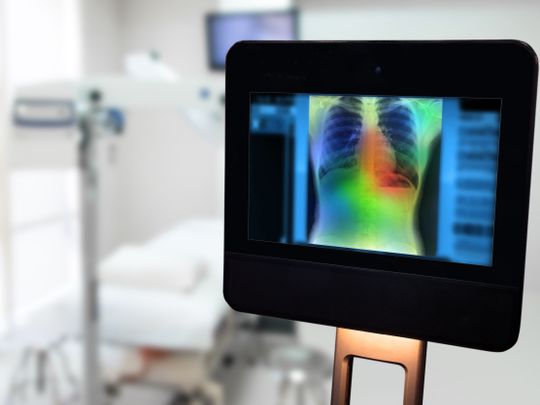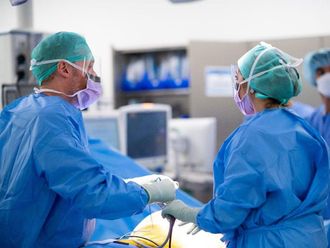
Our global healthcare system is ailing and the symptoms are serious: limited access to care, with a shortage of seven million healthcare workers globally; unsustainable cost increases, with healthcare costs rising 12.4 per cent this year in the Middle East; caregiver fatigue, with half of radiologists worldwide showing signs of burnout; a deluge of medical data, growing nearly 50 per cent a year; and a host of other pain points. Yet the prognosis is positive, as healthcare today is becoming more personalised, digitally integrated and collaborative.
Improving healthcare outcomes at the macro level requires a blend of precision diagnostics, therapeutics and monitoring tailored to each and every patient.
We call this precision health. Done right and done at scale, precision health delivers on healthcare’s triple aim: better quality care at a lower cost with increased access for patients around the world.
This creates an environment where data, analytics and individualised care help clinicians accurately diagnose disease; comprehensively monitor a treatment’s effectiveness; and improve the patient experience.
Precision health is not just a goal; it’s already a reality. In fact, medicine’s oldest form of diagnostic imaging, X-ray is at the heart of a new analytical solution that embodies precision health. With more than two billion exams done annually, an X-ray is often a doctor’s first picture of a patient, setting the stage for treatment or next steps.
To precisely match specific care with specific patients, we designed an artificial intelligence (AI) algorithm to detect pneumothorax, or collapsed lungs, in chest X-rays with high accuracy. When a collapsed lung is not diagnosed quickly and accurately, it can be deadly. When a collapsed lung is identified, the clinical team — including frontline doctors and radiologists — is alerted to help diagnose and treat patient promptly.
Solutions such as this X-ray AI app help make caregivers’ jobs easier and patients’ experiences better. And GE Healthcare is not alone. Last year, more than 100 start-ups were focused solely on healthcare AI, with the best ones integrating AI into existing devices and workflows seamlessly, even invisibly. Healthcare AI can be a game changer only if it’s not a game stopper.

Last year, more than 100 start-ups were focused solely on healthcare AI, with the best ones integrating AI into existing devices and workflows seamlessly, even invisibly.
Knowing this, we recently announced new applications and smart devices built on Edison — our own dedicated platform that helps accelerate the development and adoption of AI technology in healthcare and empower providers to deliver faster, more precise care. Edison already boasts 50 plus AI and analytics apps — everything from the collapsed lung X-ray app to a new computed tomography (CT) system that uses deep learning for image reconstruction.
The importance of precision health and the influx of AI platforms such as Edison reinforce the fact that healthcare’s future requires a team effort. Doctors, hospitals and health systems are asking for help solving big problems and they want more than just the latest short-term solution.
That is why we are partnering with our customers, clinicians and other medtech companies to address hospitals’ and patients’ needs across the entire care pathway.
Improving the healthcare industry and experience requires equal parts promise and challenge. We are already making progress: connecting precision diagnostics, therapeutics and monitoring to generate insights for better patient outcomes; embracing AI to empower caregivers and improve the patient experience; and realising that the best healthcare outcomes require teamwork.
Together, we are reshaping healthcare to be more personalised, integrated and collaborative.
— The writer is President and CEO of GE Healthcare’s Imaging business












